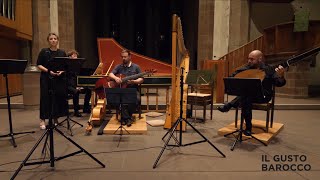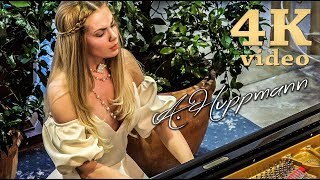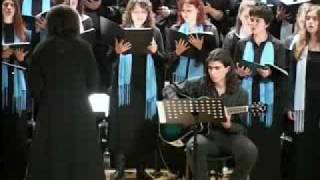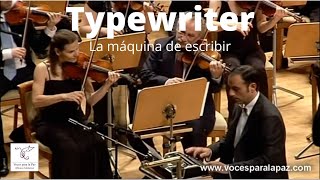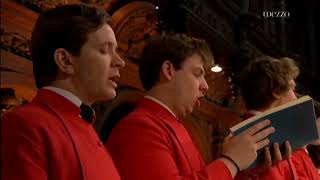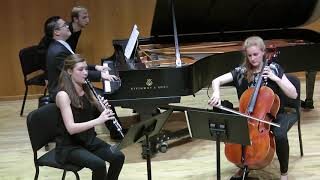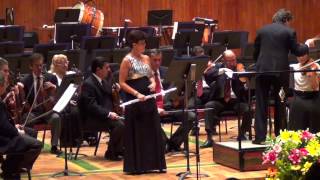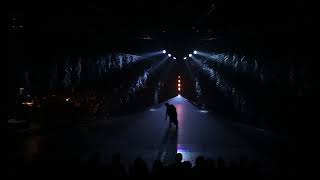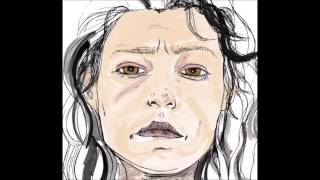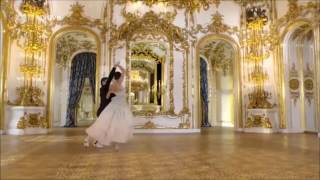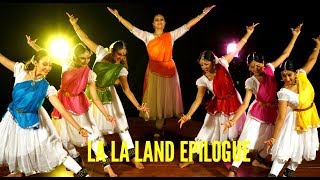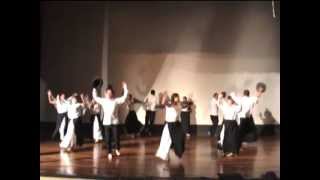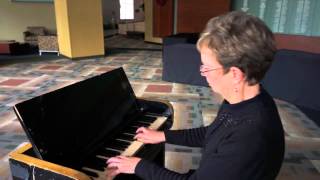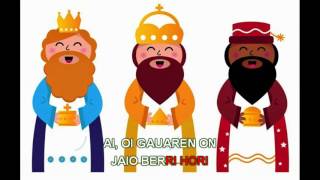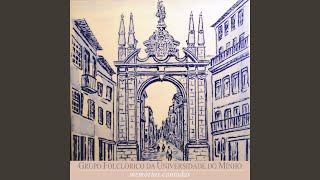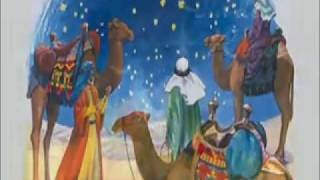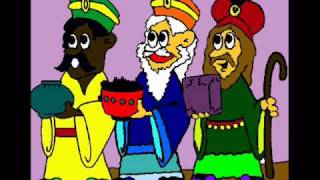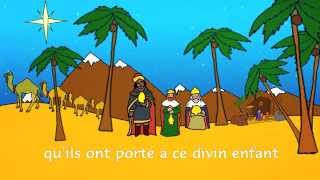
the genocidal terrorism that the State of Israel has
been exercising against the Palestinian People.
January 6th is the day the Three Wise Men arrive.
Recommended music videos for initiation to classical music
Antonia Bembo (Venice, 1640–Paris, 1720) was an Italian composer and singer. The daughter of physician Giacomo Padoani and Diana Pareschi , she sang for King Louis XIV . She studied music and literature. She traveled extensively with the guitarist Francesco Corbetta , including to Vienna, Brussels, Hanover, Spain, and Paris . She was also a student of Francesco Cavalli . She is known as "la fligia que canta " (the singing daughter), a testament to her talent for singing. In 1659, she married Lorenzo Bembo (1637–1703). They spent their first year of marriage in the Padoani household in Venice , where conflicts arose between her father and husband, and they had three children. After her father's death, they moved to Venice and lived in the church of San Moisè . In 1672 she divorced Lorenzo Bembo and returned to France under the protection of Louis XIV , who offered her shelter in the female community Petite Union Chrétienne des Dames de Saint Chaumont (Little Christian Union of Ladies of Saint Chaumont), in the parish of Notre Dame de Bonne Nouvelle , on the outskirts of Paris .
Suzanne Jerosme , a French soprano trained in London and Cologne , established herself at Theater Aachen performing a baroque, classical, romantic and contemporary repertoire in opera theater, concerts and international recitals.
Today, Suzanne offers us the aria “ Ah que l'absence est un cruel martyre ” by Antonia Bembo .
Frédéric Chopin (1810-1849) was a virtuoso Polish pianist and composer. As a pianist, he is considered one of the most important in history, and as a composer, a leading figure of the Romantic era . He was born into a musical family; his mother played the piano and his father the violin and flute. His first teacher was his sister, with whom he enjoyed playing four-hand pieces. At the age of eight, he gave his first public concert at the Radziwill family palace in Warsaw . Chopin 's work focuses exclusively on the piano, both solo and in concert, with which he embarked on a solo career of technical refinement, expressive splendor, and a deepening of rubato , ultimately becoming the musical benchmark for the instrument.
The Polonaise is a national dance and musical form originating in Poland ; hence its name. Formally, it consists of a moderate march movement in triple meter (3/4 time), with a characteristic thetic beginning (the melody starts on the first beat of the first measure) and a prothesis ending (the last accented note of the final phrase has one or more added notes); a rhythm reminiscent of the bolero. Some of the most notable and famous polonaises are those by Frédéric Chopin , such as No. 1, which we present today in a performance by the Russian pianist Anastasia Huppmann .
Ariel Ramírez (1921-2010) is one of the most important figures in Argentine folk music. He studied piano and composition, and at the age of 20, encouraged by Atahualpa Yupanqui , he traveled throughout the country, immersing himself in the diverse musical expressions of each region. Nine years later, he embarked on a four-year tour of Europe , giving numerous concerts of music from his homeland. Upon his return to Argentina , he formed a company of musicians and dancers with whom he toured the country for 20 years. Following this period, he performed as a piano soloist in countless recitals, interspersing his own compositions with performances. He wrote numerous songs and musical works, most notably the world-renowned Misa Criolla .
Navidad Nuestra is a cantata with lyrics by Félix Luna and music by Ariel Ramírez structured in six scenes or musical movements, of which we offer today the fifth, Los Reyes Magos , in the interpretation of the Choir of the Experimental High School of the University of Macedonia .
Leroy Anderson (1908–1975) was an American composer of short orchestral pieces of light music , many of which were premiered by the Boston Pops Orchestra under the direction of Arthur Fiedler . Film score composer John Williams described him as "one of the greatest American masters of light orchestral music." Born in Cambridge , Massachusetts , to Swedish parents, Anderson received his first piano lessons from his mother, a church organist. He continued his piano studies at the New England Conservatory of Music . In 1925, he entered Harvard University , where he studied harmony, counterpoint, fugue, composition, orchestration, and double bass. He also studied organ with Henry Gideon .
Anderson's musical style employs creative instrumental effects and occasionally uses sound-producing elements, such as the piece "The Typewriter," which we present today with its touch of humor ( Erik Satie used a typewriter in his ballet Parade before him). "The Typewriter" is a novel instrumental piece composed by Leroy Anderson in 1950 and premiered by the Boston Pops . Its name refers to the fact that its performance requires a typewriter, which is used on stage: the keystrokes, its bell, and the carriage return mechanism are an important component of the piece.
Today we can see it with the Symphony Orchestra of Solidarity Musicians , percussionist Alfredo Anaya as soloist and maestro Miguel Roa as conductor.
Recommended classical music videos
George Frideric Handel ( 1685-1759) was born in Halle , Germany . A naturalized British citizen, he is one of the leading figures in the history of music and, certainly, of the Baroque period. Of his abundant musical output, the oratorio Messiah stands out as one of the masterpieces of all time . As a child, he began receiving lessons in harmony and counterpoint from Friedrich Zachow , the organist of Halle , with whom he also learned to play the oboe, violin, and organ. At the age of 18, he moved to Hamburg, where he wrote his first two operas. After three years, he traveled to Florence and then to Rome . In 1710, he returned to Germany and from there to London, where he settled for the rest of his life. Despite the complete silence with which he protected his privacy, his homosexuality seems clear. He died at the age of 74 at his home.
The catalogue of works by George Frideric Handel , known by the acronym HWV , which stands for Handel Werke Verzeichnis (German for Catalogue of Handel's Works), is not arranged chronologically but thematically, by type of work, genre, and whether vocal or instrumental. It comprises 612 works plus 25 supplements and doubtful or lost works, and was compiled between 1978 and 1986 in three volumes. The exact number of compositions is therefore difficult to determine. Its author is the musicologist Bernd Baselt .
Messiah is an English oratorio composed by George Frideric Handel in 1741, with a biblical text compiled by Charles Jennens . It premiered in Dublin on April 13, 1742, and was performed almost a year later in London . After a modest initial reception, the oratorio gained popularity and eventually became one of the best-known and most frequently performed choral works in Western music. Handel turned to English oratorios in the 1730s in response to changing public tastes; Messiah was his sixth work in this genre. While his other oratorios show a marked Italian influence, the music of Messiah is rooted in the old German passions and cantatas.
The work's three-part structure approximates that of Handel 's three-act operas, with the "parts" subdivided by Jennens into "scenes." Each scene is a collection of individual numbers or "movements" that take the form of recitatives, arias, and choruses. PART I (0'15") begins with the symphony/overture, after which the text uses prophecies from Isaiah and others, and proceeds to the Annunciation to the Shepherds, the only scene taken from the Gospels . In PART II (56'42"), Handel focuses on the Passion and ends with the " Hallelujah " chorus. PART III (1h 53'41") covers the resurrection of the dead and the glorification of Christ in Heaven.
Ludwig van Beethoven (1770-1827), along with Bach and Mozart, forms part of the trio of giants of Western music. Born on December 16, 1770, in Bonn , his Flemish father attempted to showcase him as a second Mozart , though this proved a notable failure. Despite this, from the age of nine, the organist Christian Gottlob Neefe captivated him with the study of Bach , whose influence he would always hold dear. In 1787, he moved to Vienna intending to study with Mozart , but his mother's death forced him to return to Bonn a few days later. After five years, he returned to Vienna, where he was able to study with Haydn and Salieri . However, his career as an excellent pianist was cut short by the deafness that struck him the following year, leaving him completely unable to play.
The catalogue of Beethoven's works . There are 138 musical works composed by Beethoven , arranged by numbers known as opus ("work" in Latin) or its abbreviation op. , assigned by the composer's publishers during his lifetime. In addition, there are another 205 works without opus numbers that were published after the composer's death. These works were assigned WoO numbers (Werke ohne Opuszahl, "works without opus numbers"). This catalogue was first compiled by Georg Kinsky and Hans Halm (Das Werk Beethovens) in 1955.
The Piano Trio in B-flat major, Op. 11 , also known as the Gassenhauer Trio , is a chamber piece for piano, clarinet (or violin), and cello (sometimes substituted by bassoon) composed by Ludwig van Beethoven between 1797 and 1798. The score is dedicated to Countess Maria Wilhelmine von Thun . The nickname " Gassenhauer Trio " comes from its third movement, which contains nine variations on a theme from Joseph Weigl 's comic play L'amor marinaro ossia Il corsaro .
Structure . The work consists of three movements: I (0'11") ALLEGRO CON BRIO. It is written in the key of B-flat major , in 4/4 time and in sonata form (exposition-development-recapitulation). The transition between the first and second themes is noteworthy. After a convincing modulation to the dominant, F major , what seems to be a second theme begins, but in D major ; this quickly dissolves into fragments of the first theme and leads to the second theme proper, which first appears in the piano in F major . In the recapitulation, the composer omits the D major episode. II (9'32") ADAGIO. This movement is in E-flat major and in 3/4 time. It again adopts a sonata form which on this occasion presents a brief development and a highly ornamented recapitulation . III (14'03") THEME WITH VARIATIONS. ALLEGRETTO. It returns to the 4/4 time signature and is structured as a theme with nine variations. The Finale is both a vehicle for Beethoven 's pianistic virtuosity and an example of his variation technique.
Today we have the pleasure of hearing from Katrina Clements (clarinet), Elena Denny (cello) and Wayne Ching (piano).
José Pablo Moncayo (1912-1958) was a Mexican composer who represents one of the most important musical legacies of Mexican nationalism , alongside Silvestre Revueltas, Carlos Chávez , and Julián Carrillo . He produced some of the masterpieces that symbolize the essence of national aspirations. He studied piano with Eduardo Hernández Moncada and later entered the National Conservatory of Music in 1929. His teachers at this institution were Candelario Huízar and Carlos Chávez , in harmony and composition, respectively. During this time, he was forced to play piano in cafes and radio stations to contribute to the family income and to pay for his studies, until he joined the National Symphony Orchestra as a percussionist, conducted by Carlos Chávez .
Amatzinac is a suite of short pieces written for flute and string orchestra, taking its name from the Mexican river of the same name. Today, flutist María Esther García Salinas performs it, accompanied by the Mexico City Philharmonic Orchestra conducted by Mexican maestro José Areán .
Tony Prabowo , born in Malang, Indonesia in 1956, studied music under the guidance of acclaimed composer Slamet Abdul Syukur . Known for fusing elements of Western classical music with Indonesian musical traditions such as gamelan, he was soon recognized as one of his country's most important composers for his numerous collaborations with renowned choreographers, visual artists, poets, theater directors, and filmmakers. He studied violin at the Akademi Musik Indonesia in Yogyakarta (now AMI) before transferring to the Jakarta Institute of Arts (IKJ), where he learned composition under Slamet Abdul Sjukur . However, much of his learning was self-taught.
He has worked in a wide variety of genres: chamber music, opera, dance, and theater. Notable compositions include Dongeng Sebelum Tidur (1992), Autumnal Steps (1996), and Requiem for Strings (1998). His opera " The King's Witch " (1999) was commissioned and performed by the New Juilliard Ensemble at Alice Tully Hall (NYC) in 2000. In 1996, he founded the New Jakarta Ensemble , a percussion and traditional instrument group that has performed in Indonesia, the USA, the UK, Australia, and South Korea . His music has been performed at specialized festivals, such as Tanglewood and the Linz Contemporary Music Festival.
Gandari is Tony Prabowo 's latest opera, following Kali, The King's Witch , and Tan Malaka. It premiered in December 2014 at the Jakarta Theatre in Indonesia . This video is the revised version that will be presented on October 16 and 17, 2015, at Frankfurt LAB during the Frankfurt Book Fair . As one of the leading figures in contemporary Indonesian music, he has created a unique and multisensory work of art, together with international artists, that combines music with singing, dance, and recitations in the opera-ballet " Gandari ." This reinterpretation of an episode from the Indian epic Mahabharata is based on a poem of the same name by the renowned intellectual and poet Goenawan Mohamad , who brilliantly perceived Gandari more as a concept than a figure on stage. In solidarity with her husband, Destrarastra , blind from birth, Princess Gandari chooses to live her life blindfolded. This opera is a transcription of Gandari 's last five days before, overcome by despair, he finally closed his eyes to the sensual delight of the world. Prabowo and the artists adapted " Gandari " to the present day to create an evocative parable about the relationship between social norms and individual sensibility. (Excerpt from the video's footnote)
Today it is offered to us by the Ensemble Modern Academy Frankfurt conducted by the Dutch maestro Bas Wiegers .
Recommended music videos for all tastes
Oscar Peterson (1925-2007) was a Canadian jazz pianist. His style, developed during the 1940s, ranges from swing to bebop and falls within the classical or traditional jazz tradition. A follower of Art Tatum , he was a technically gifted acoustic pianist with a remarkable ability to play at speed and a great flair for swing , regardless of the tempo. His performances in small groups and accompanying singers are highly praised, although his best moments were as a soloist. Peterson was also a composer; for example, he wrote and recorded the renowned Canadiana Suite in 1964, and he recorded several of his own works on electric piano. An exceptional vocalist, his voice is strongly reminiscent of Nat King Cole's .
Anari is a Basque singer-songwriter born in Azkoitia (Basque Country) in 1970. She began her musical career as a drummer in the band Psych Out (alongside members of Akauzazte ). As a solo artist, she has released five albums and one in collaboration with the Navarrese musician Petti . Her albums have received excellent reviews, and she has been compared to PJ Harvey (the "Basque PJ Harvey"), Cat Power , and Nick Cave . In 2004, the Catalan music magazine Rockdelux ranked her number 77 on its list of the 100 best Spanish albums of the 20th century . In 2018, she became the first woman to receive the Adarra Award , a recognition given by the Donostia/San Sebastián City Council , and the youngest recipient to date.
Dámaso Pérez Prado (1916–1989), known as the "King of Mambo," was a Cuban musician, composer, and arranger who became a naturalized Mexican citizen. He studied music in his native Cuba and worked with various Havana orchestras in the 1940s. A skilled pianist and keyboardist, he has been considered by expert critics to be one of the best in this genre of popular music. He is best known for his contributions to the mambo genre, which originated in the Cuban danzón and paved the way for the emergence and development of the cha-cha-chá , as well as the music that arose in the late 1950s and was later known, from the early 1970s onward, as salsa . He was not the creator of the rhythm, which was already being played in Havana in the late 1930s, but he was its greatest international popularizer.
Today we are visited by the New Brunswick Youth Orchestra under the direction of Antonio Delgado with the Mambo potpourri by Pérez Prado .
Gwen Stefani (Fullerton, California; October 3, 1969) is an American singer, songwriter, fashion designer, and actress. She is the co-founder, lead vocalist, and principal songwriter of the band No Doubt , whose singles include "Just a Girl," "Spiderwebs," and "Don't Speak" from their 1995 studio album Tragic Kingdom , as well as "Hey Baby" and "It's My Life" from later albums. During the band's hiatus, she embarked on a solo career in 2004, releasing her debut studio album Love. Angel. Music. Baby ., inspired by 1980s pop music , which achieved both commercial and critical success. Her single "Hollaback Girl" reached number one on the Billboard Hot 100 and also became the first song to sell one million digital copies.
In 2006, she released her second studio album, The Sweet Escape . Among the singles from this album was " The Sweet Escape," which peaked at number three on the Billboard Hot 100 chart in late 2007. Her third solo album, This Is What the Truth Feels Like (2016), was her first solo album to reach number one on the Billboard 200 chart. She has released several singles with Blake Shelton , including " Nobody but You " (2020), which peaked at number 18 in the US. As a solo artist, she has received an American Music Award, a Brit Award, a World Music Award , and two Billboard Music Awards . Billboard magazine ranked Stefani as the 54th most successful artist and the 37th most successful Hot 100 artist of the 2000–2009 decade. In 2012, VH1 ranked her 13th on their list of the "100 Greatest Women in Music." As a solo artist, Stefani has sold over 30 million albums worldwide.
Recommended peculiar videos
Johann Strauss II (1825-1899) was an Austrian composer, son of Johann Strauss and brother of composers Josef Strauss and Eduard Strauss . Known during his lifetime as "the Waltz King," he was a key figure in the evolution and sophistication of the waltz, transforming it from a peasant dance into a form of entertainment at the Imperial Court . He is the most famous member of the family for his waltzes, polkas, and marches; he also composed several operettas. His father wanted to spare his son the hardships of a musician's life, so it was his mother who helped and encouraged him to focus on music. His work forms the basis of the repertoire performed annually at the Vienna Philharmonic 's New Year's Concert .
From one of these New Year 's concerts, specifically the one in 2011 , we have rescued the Blue Danube waltz conducted by the Austrian maestro Franz Welser-Möst (1960) and danced by the soloists and Corps de Ballet of the Vienna State Opera Ballet .
La La Land is a 2016 musical film directed by Damien Chazelle and with a soundtrack composed by Justin Hurwitz .
The "Epilogue" from La La Land is a medley of musical themes from the film, interpreted through Bharatanatyam , a classical Indian dance. This adaptation, frequently performed by IndianRaga Fellows, combines the emotional depth of the music with the expressive vocabulary of Bharatanatyam . The " Epilogue " is a compilation of musical themes from La La Land , including "Mia and Sebastian's Theme" and "City of Stars." In Bharatanatyam , this piece is performed by dancers who use the intricate hand gestures (mudras), facial expressions (abhinaya), and rhythmic footwork characteristic of the dance to convey the narrative and emotional nuances of the music.
The San Juanito is the national dance of Ecuador . This dance has its origins long before the Spanish colonization and is said to have been practiced by the Incas as a type of ritual to honor the god Inti . Perhaps in its beginnings this dance did not have this name, since this designation has Christian roots and is an example of the many practices of cultural appropriation, given that this name is in honor of Saint John the Baptist (Extracted from Factory Claqué) .
Today, the group of teachers from the Rafael María Carrasquilla School will perform it for us.
An idiophone , according to the Hornbostel-Sachs classification, is a musical instrument that produces sound by using its own body as a resonating material. It produces sound primarily through the vibration of its own body, without the use of strings, membranes, or air columns. Its body, made of wood, metal, or stone, is hard but resonant, with sufficient elasticity to maintain a vibratory motion.
The celesta is a percussion instrument, a harmonium resembling a small upright piano; it is classified as an idiophone and its name comes from the French word céleste (heavenly). The celesta 's mechanism consists of hammers activated by keys, which strike metal plates placed over wooden resonators.
Kelly Zuercher is a keyboardist with the Colorado Springs Philharmonic and in this video she demonstrates the magical sounds of the celesta , one of the featured instruments, for example, in Tchaikovsky 's The Nutcracker (1'40''), as we can appreciate it today.
Recommended music videos for children
Various Wikipedia articles and relevant information on Artificial Intelligence were used to prepare these texts.
The texts of Videomusicalis are written in Basque, Spanish and English.




